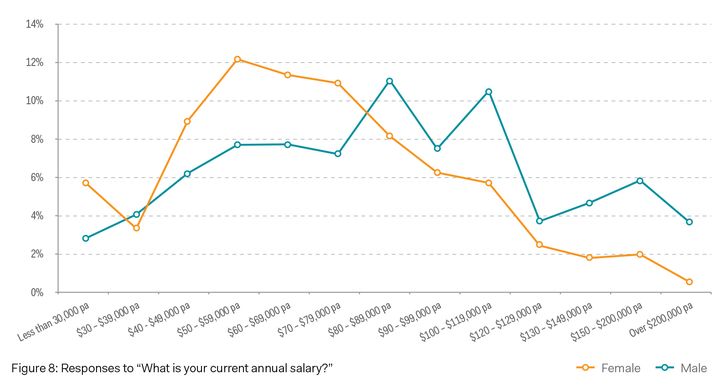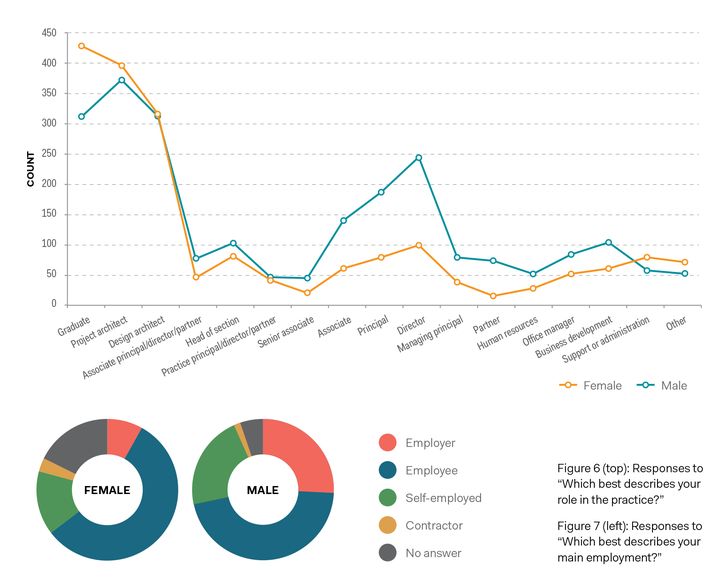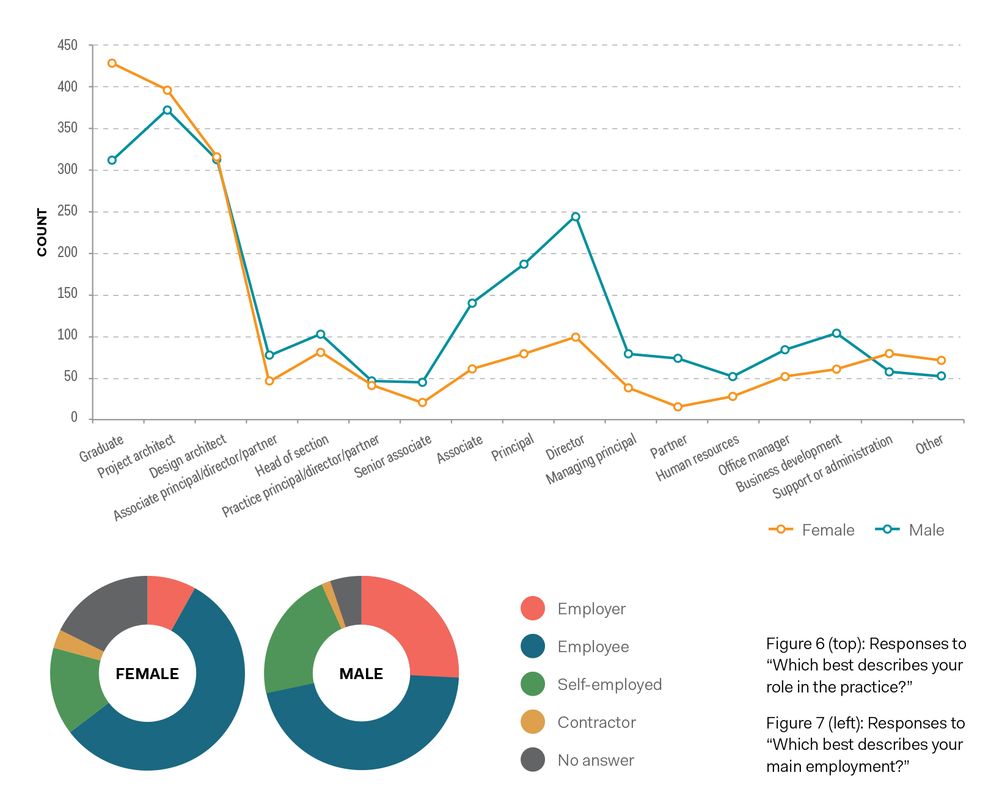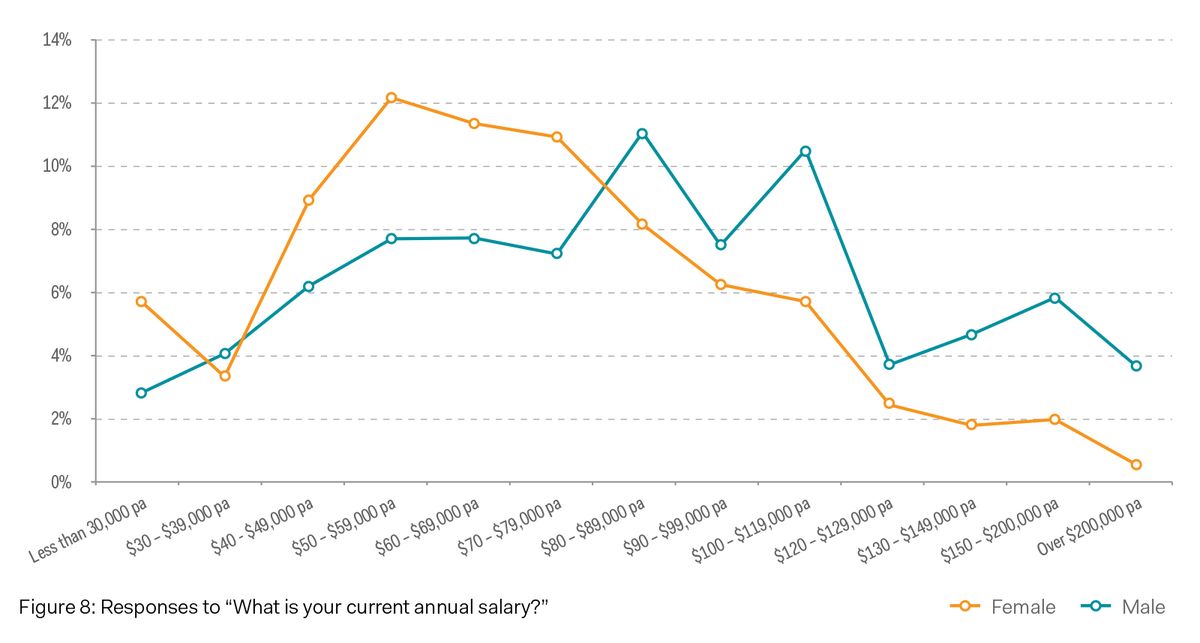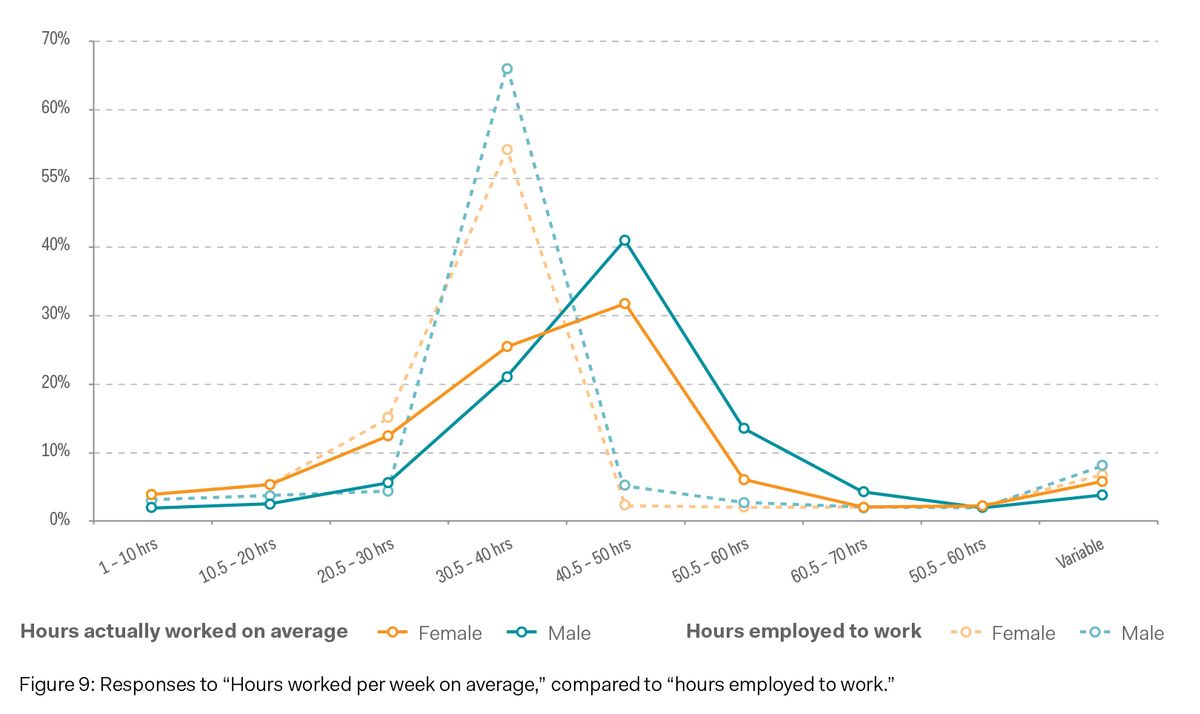The Parlour survey “Where do all the women go?” aimed to understand women’s participation in and engagement with architecture in Australia. It collected demographic information and discussions of women’s experiences of working in architecture and their career aspirations, and provided some insight into why they leave the field. The second survey “… And what about the men?” provided a complementary picture of the men of Australian architecture and aimed to understand how their roles and experiences are similar to and different from women’s1. The two surveys asked identical questions and attracted a large number of responses – 1,237 women and 918 men. We expected a strong response from women, but were surprised and gratified at the high level of engagement from men too. Comments indicate that many men also feel the need for serious discussion of, and changes to, architectural working conditions.
Both surveys aimed to reach a wide range of potential respondents – including those not normally found via either registration records or membership of the Australian Institute of Architects – that is, people who were working “invisibly” in architecture, or who had left or moved sideways into related fields. We used many channels to seek responses and the results capture the experiences of a broad range of people. However, this “snowball” method also means that the survey findings only represent the respondents themselves – they cannot be used to make industry-wide assumptions. Nevertheless, the responses represent a substantial body of knowledge and cover a much larger and more diverse group than any prior study. It is also worth noting that the demographic profile of the survey respondents roughly corresponds to that obtained through the 2011 Census: people self-identifying as working in architecture, with data including age, location and salary.
Responses to “What is your current annual salary?”
Responses indicate that many experiences are shared by women and men. High proportions of respondents had (or were studying for) formal qualifications in architecture – 94.2 percent of women and 97.2 percent of men – and similar proportions had further qualifications in other fields – 27 percent of women and 30 percent of men. There were also similar levels of participation in the public culture of architecture – 82.3 percent of women and 84.6 percent of men indicated some level of participation – and this engagement was distributed across a similar range of activities. Approximately half of all respondents had undertaken unpaid or pro bono work in the profession (57 percent of men and 50.2 percent of women). Shared concerns of all respondents included long working hours, poor remuneration and worries about the current state and future of the profession.
The areas where substantial differences show up are telling. Women respondents were more likely to be employees than employers (8 percent of women were employers, compared to 26 percent of men), were much less likely to be in senior positions, and earned less. Those who were directors or partners in practices tended to be running small- to medium-sized practices. Men were more likely to have their current primary employment in private practice (78 percent of men and 50 percent of women). They were also more likely to be registered (70 percent of men and 45 percent of women), and to be a member of the Australian Institute of Architects (78 percent of men and 44 percent of women). It is also worth noting that a higher proportion of women had let their membership lapse – 22 percent of women and 9 percent of men.
Responses to “Which best describes your role in the practice?” and “Which best describes your main employment?”
There was also a large disparity in the age of respondents, with the majority of female respondents being younger, and men being older. These different age profiles explain some, but not all, of the disparities in income and seniority.
Twice as many women had taken a career break of six months or more (43.5 percent of women and 20.6 percent of men). For men, the most common reason for taking time off was travel (almost half the men). One quarter of the women who had taken a break had done likewise, while almost one half had taken time off to care for children or other family members (355 women compared to just 31 men).
All of these differences indicate that women are more likely to have atypical or flexible career paths, with multiple breaks, different levels of intensity and changing roles over the course of a career. They are also more likely to move in and out of private practice and to work in related areas. In contrast, men are more likely to follow a “traditional” career path and are more active in the conventional areas of influence and power in the profession. The structures of the profession are still geared towards linear, rising career trajectories and this has a detrimental effect on many women (and some men), regardless of their talent, commitment, expertise and experience. It also means that women are less likely to be in a position to change these structures.
In addition to the quantitative, “tick box” answers, respondents had the opportunity to give longer, open-ended responses to many of the survey questions. The differences across the open-ended responses are very informative. These relate complex and nuanced individual stories, but some obvious trends also occur – again and again women told of intense difficulties in balancing work and family life in a profession that often demands long hours and offers little financial reward in return. Some men also raised this, but much less often – indeed, the frequency with which this was raised by women respondents was startling even to us.
Together, the two surveys provide complex stories of architectural careers. They suggest that for women to be able to participate to their fullest capacity we need to see structural change, to shift what is valued in the profession and how this value is expressed. The surveys also reveal a serious need for workplace change – particularly to redress the pressing issues of long hours, low pay and the lack of availability of meaningful part-time work. Addressing these problems is essential to the ongoing viability and sustainability of the profession as a whole.
The surveys have informed a range of other research outputs, including the Parlour Guides to Equitable Practice, and a full report on the survey findings is in process at the time of writing.
1. “Where do all the women go?” ran from 2 July to 17 August 2012. “… And what about the men?” ran from 2 December 2012 to 5 February 2013. See “Technical Report and Preliminary Statistics: Where do all the women go?”, December 2012 and “Technical Report and Preliminary Statistics: And what about the men,” March 2013.
Source

Discussion
Published online: 30 Oct 2014
Words:
Justine Clark
Images:
Nick Bassett
Issue
Architecture Australia, September 2014


